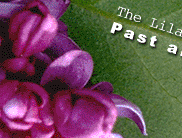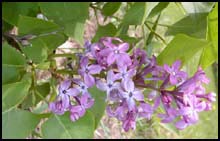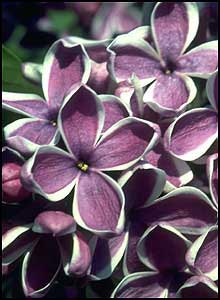





 | |||||||||||
|
|||||||||||
 | |||||||||||
|
The Science of Lilacs From just 20 wild species, lilac breeders have developed over 1,600 cultivars. They produce new cultivars by:
|
The benefits of good breeding Traditionally, lilac experts bred plants within one species, or at most, crossed two species. Today, many species can be combined to produce more complex hybrids. 'Miss Canada' and 'Josťe' are both complex hybrids resulting from crosses involving three species. |
|||||||||||||||||
|
Plant paternity Compare two generations of one lilac "family." 'McMaster Centennial' was developed at Royal Botanical Gardens, its mother (seed parent) is 'Primrose', while its father (pollen parent) is 'Saint Joan'. Do you see a family resemblance? Sometimes different lilac cultivars look very similar. If a decision is needed on a plantís pedigree, scientists may need to use DNA fingerprinting for confirmation. |
Registering new lilacs Once a new cultivar is selected and tested, the breeder may register its name with the International Registration Authority for cultivar names in the Genus Syringa (lilacs), located at Royal Botanical Gardens. After receiving information from the breeder or selector about the plantís parentage or source, and its proposed name, the Registrar verifies that the name is not already in use, publishes a description of the plant, and maintains a permanent record. |
|||||||||||||||||
|
Trend setters 'Prairie Petite' is one of the first dwarf forms of the common lilac. It was developed from irradiated seed. Breeders use radiation to create mutations in the hope that some of resulting seedlings will have horticultural potential. |
||||||||||||||||||
|
Syringa vulgaris 'Sensation' a two-toned lilac
|
Lilacs are a favourite cut flower in Europe, but using heat and gas to force
early bloom can cause spontaneous mutations. Dutch horticulturist, Dirk Eveleens Maarse,
found and rooted this bi-coloured bud mutation (sport) from the purple
cultivar 'Hugo de Vries'. The flower buds of 'Sensation' are made up of two types of cells ó those that can produce purple pigment and those that canít. The latter cells create the white edge on the flower, but occasionally they take over the entire flower bud, resulting in an all-white floret. Gerrit Maarse (no relation to Dirk Eveleens Maarse) developed 'Primrose' in much the same manner. Breeders hope to transmit and intensify its unique yellow colour. |
|||||||||||||||||
|
||||||||||||||||||
 Introduction
Introduction

